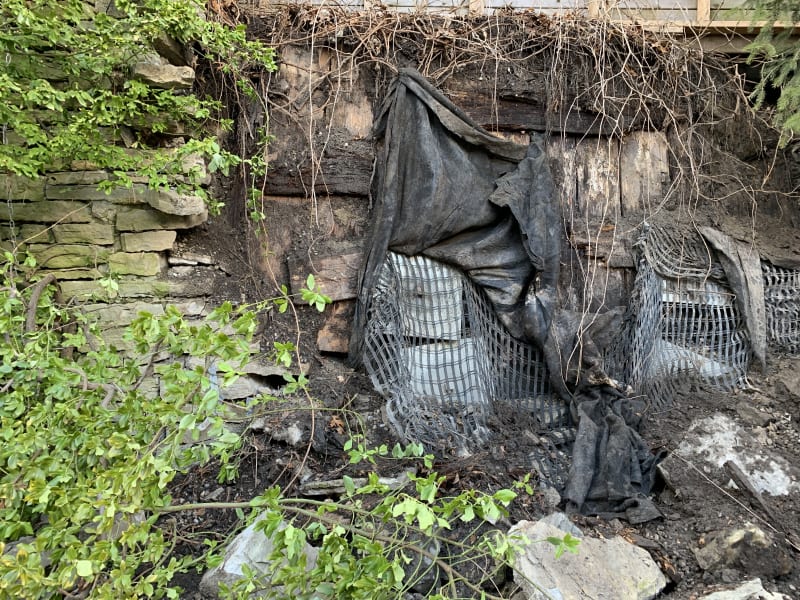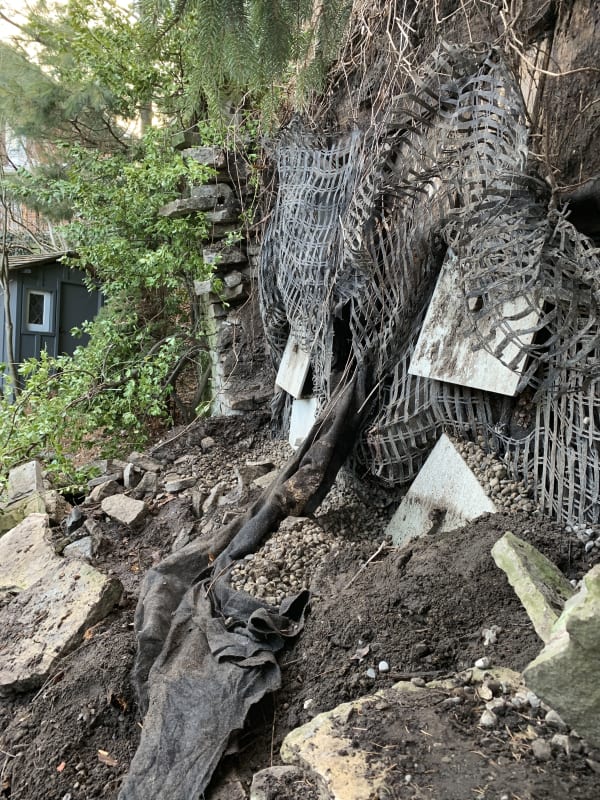I am a structural engineer, not geotechnical, so some of my terminology may be off. I have project that involves the failure of a dry stack stone wall, approximately 9 feet high. The original drawings call for 6 helical soil anchors to stabilize an approximate 8 foot high soil elevation difference. The makeup of the wall is as follows, Sandy soil, 1x10 vertical wood planking, geotextile fabric, and then a wire mesh (though the existing conditions show a poly fabric mesh has been substituted), six soil anchors (helical with 18"x18" plate) spaced (3 approximately 2 feet down from the top of the soil and then 3 more 5 feet below the upper row), then the drystack wall.
Based on this, I would stay the drystack wall is not intended to retain soil. It should also be noted that the 1x10 wood framing is rotten (after 7 years of installation)
The upper row of soil anchors appears to have dropped approximately 3.5-4 feet lower than on the original design drawings and in two locations, the anchors appear to have pulled out 4-7" from the soil.
I have two questions,
1., is it normal to have this type of configuration to retain soil? Seems odd there is not some kind of structural wall or framing that the helical anchors tie into to retain the soil. Surely the wire mesh or poly mesh is not meant to retain the soil?
2. Would excessive rain (which happened the day before the collapse) cause the soil anchors to loose their structural integrity/capacity?
Thanks
Based on this, I would stay the drystack wall is not intended to retain soil. It should also be noted that the 1x10 wood framing is rotten (after 7 years of installation)
The upper row of soil anchors appears to have dropped approximately 3.5-4 feet lower than on the original design drawings and in two locations, the anchors appear to have pulled out 4-7" from the soil.
I have two questions,
1., is it normal to have this type of configuration to retain soil? Seems odd there is not some kind of structural wall or framing that the helical anchors tie into to retain the soil. Surely the wire mesh or poly mesh is not meant to retain the soil?
2. Would excessive rain (which happened the day before the collapse) cause the soil anchors to loose their structural integrity/capacity?
Thanks


